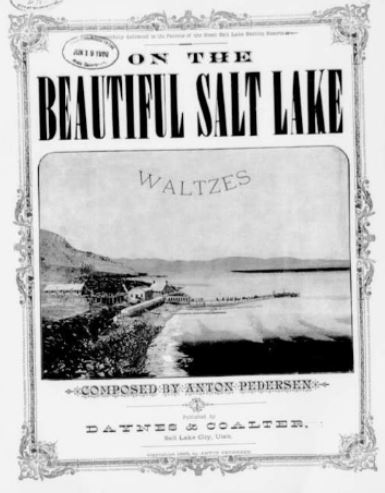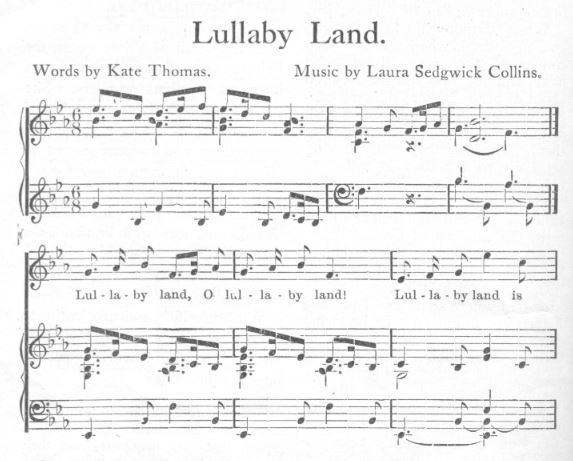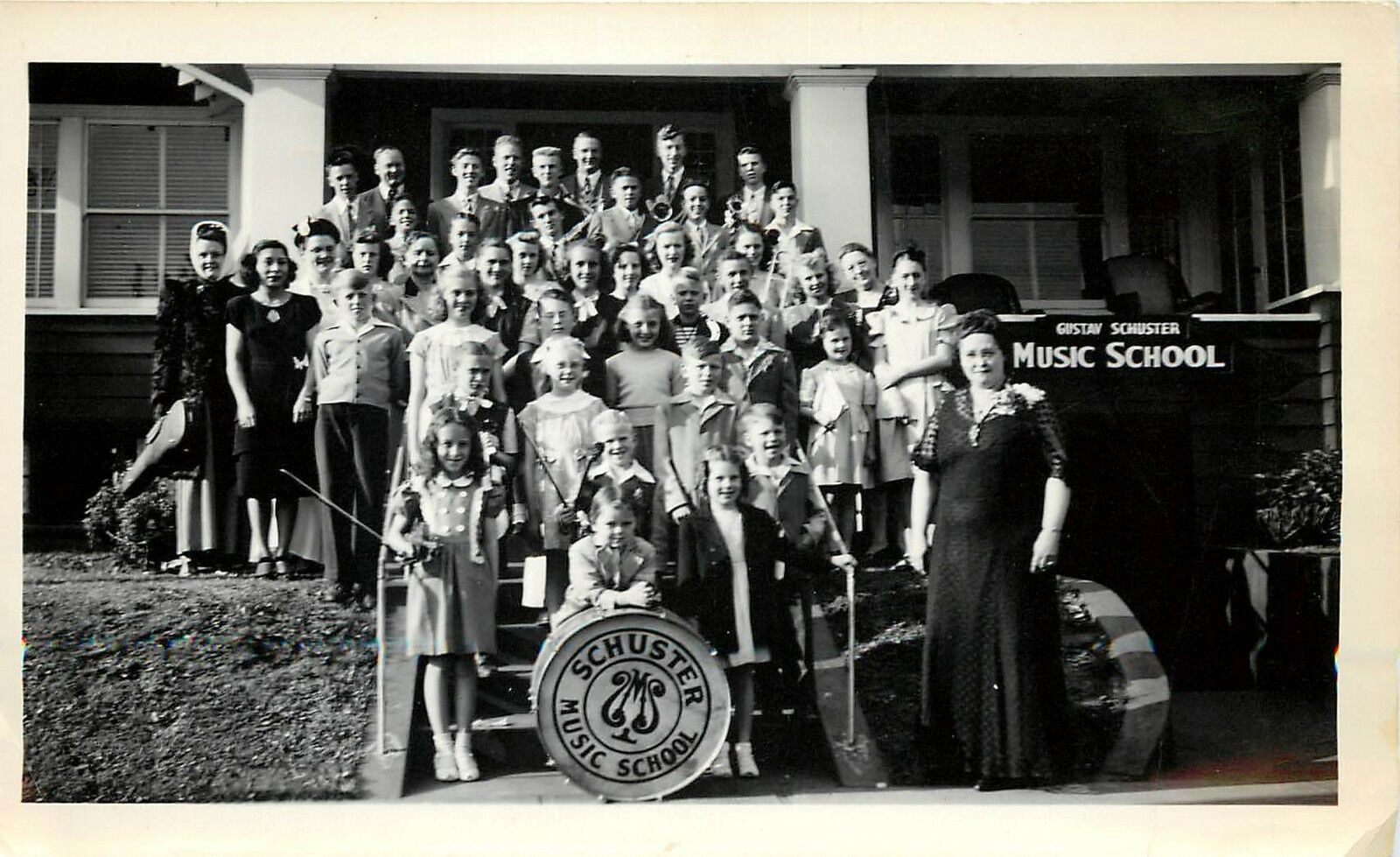Examples of classical music from Utah’s past. Most came from vintage sheet music, and some have recordings. Many of these are simply reference recordings limited to the use of synthesized instruments, with vocal lines rendered on other instruments. These would be much more impressive if captured in live recordings. Of course, they would be more impressive in live recordings, but until that happens at least we have these reference recordings.

Gallery of Historic Utah music: (The music in this section was not written by me, but rather is largely from old sheet music by various early Utah composers from 1880 up to about 1920, plus a very few other more contemporary works. Most of these are for solo piano because that is the form that lends itself to recording. But in some cases I have had to transcribe songs or other works with vocal parts to be played as instrumental parts to allow for recording.)
Newest addition: Handcarts West! Snippets from a 1950s musical theatre production written to be performed by teens. This sheet music was included in the printed script that performers worked from. (… I know, I know … FROM WHICH performers worked…) The “Book” (story/script) was by Ruth Hale, a major player in LDS/Mormon community theatre circles, and a co-founder of the popular Hale Center Theater. Music was composed and/or arranged by Samuel O. Pratt, who was probably related to the family central to the Lyon & Healy Harp Company. My personal opinion is that some of the piano music requires abilities beyond that of an average teen performer, which may have limited the reach of this production. Hear a few excerpts at my YouTube page.
Two piano solos by Orson Pratt, Jr. which were printed in an 1869 magazine on Utah Arts & Culture. Pratt was active as a musician in local concerts & theatres, and as a composer & teacher. Some of the earliest classical sheet music published in Utah. (The recordings of both of these as performed by live musicians is complete, but it might take a while to prep the videos so that they can be shared.)
~ The Grasshopper – a fun little piece with lots of motion. Hear it on my YouTube page.
~ Gertrude Mazurka – an elegant concert selection
Deseret Schottische, Geraldine Warden – Composed by an Australian Opera singer who visited Salt Lake City for a short series of concerts in 1868. She was considered a “star” as a singer, but was also a verstile musician who sometimes accompanied her fellow singers in recitals as their pianist. A synthesized piano track is included in this recording on YouTube.
For Edna, Charles Frederick Stayner – One example from a set of a dozen short piano solos from the 1890s, each named for a specific young lady of his acquaintance. (The recordings of this as performed by a live musician is complete, but it might take a while to prep the video.)
On the Beautiful Salt Lake Waltzes, Anton Pederson – Another piano solo celebrating recreation at the resorts on the shores of the Great Salt Lake. You can hear an audio only recording of this by clicking this link. This piece composed in the late 1800s, and at nearly 7 minutes playing time, it is currently the longest selection on this page. Pederson was one of the key figures in organizing a local orchestra which evolved, decades later, into the Utah Symphony.
Saltair March, Godfrey Buglione – This 1910 piece for band was composed by the bandmaster of a regimental band stationed at Fort Douglas near the University of Utah in SLC. Title of the piece refers to a once popular beach resort on the shores of the Great Salt Lake which featured frequent concerts by local bands, including Buglione’s own military band. This is a reduction to a solo piano version. (Recording coming someday . . . ) (But the full band version can be heard in a recording by a modern military band on Youtube. (That band recording is not a project of mine, but is part of a very ambitious series of historic band music recordings.)
Laughing Waves – Ragtime (?) piano solo from 1904 by Herbert W. Lawrence. See the short video on YouTube.
Wizard of the Wasatch March by Gustav Schuster – Composed around 1913 for a short-lived festival in Salt Lake City that included Mardi Gras style parades and other features, but with local and pseudo Native American themes. The festivities were designed both for fun and funds, with the goals of stimulating local tourism & shopping until the onset of WWI put a damper on this and many other non-essential events. But while it lasted, the festival events were heavily promoted, and the sheet music for this “circus band” style march was even printed in local newspapers. Here is a recording from my YouTube channel.
Along the Navajo Trail, Seldon Heaps – Impressionistic piano solo from the 1930s by a versatile composer who worked in classical, popular and religious music. Hear it in a YouTube video. (The piece shares a name with an unrelated classic “Western Swing” song, but this local one is in a very different style.)



Music for ensembles ~
The Trumpeters, Joseph J. Daynes – Original was for men’s voices and keyboard, but due to the title and style of music this arrangement is for brass and organ/piano. Hear my arrangement on YouTube.
Lullaby Land & Irish Song – Originally offered as songs for children’s voices in a Mormon Church magazine of the 1890s, but they also sound rather nice as adapted to be played as instrumentals for violin & piano or flute & piano. Lyrics were by a Utah poet, daughter of a prominent SLC family, who was living a Bohemian lifestyle in NYC, in partnership with music by the only female composer in the pool of American students taught by Dvorak during his time in the USA.
Saltair March, Godfrey Buglione – This 1910 piece for band was composed by the bandmaster of a regimental band stationed at Fort Douglas near the University of Utah in SLC. Title of the piece refers to a once popular beach resort on the shores of the Great Salt Lake which featured frequent concerts by local bands, including Buglione’s own military band. Hear it in a recording by a modern military band on Youtube. (This recording is not a project of mine, but is part of a very ambitious series of band music recordings.) Utah composer and film maker Marden Pond also used a band version of this piece in his documentary film “Great Salt Lake – Utah’s Sanctuary.” There is also a reduction to a solo piano version, with a recording coming here someday…
Wasatch March, Godfrey Buglione – Another march by this composer with a local inspiration. (There is at least one more, a “Fort Douglas March”, which I hope to find someday.) This recording is done by a synthesized concert band. Title of the piece directly or indirectly refers to the Wasatch Mountain range which towers over the east side of the Salt Lake Valley, although it might also refer to an organization which shared that name. (Composers of marches in that time period often wrote original music titled after organizations that commissioned the piece, or newsworthy events that inspired the music.)
Liahona – Overture from the cantata composed by William King Driggs, father of the “King Sisters” singing group. The vocal score version was printed for piano & organ, with mentions (cues) of occasional key phrases on other instruments, meaning this one will take extra time to record.
James Prigmore has a rich history in local professional music circles, from orchestral to vocal to theatre music and beyond. Here is a flashback to one of his large scale projects for choir & orchestra from the 1960s.
…. to be continued.